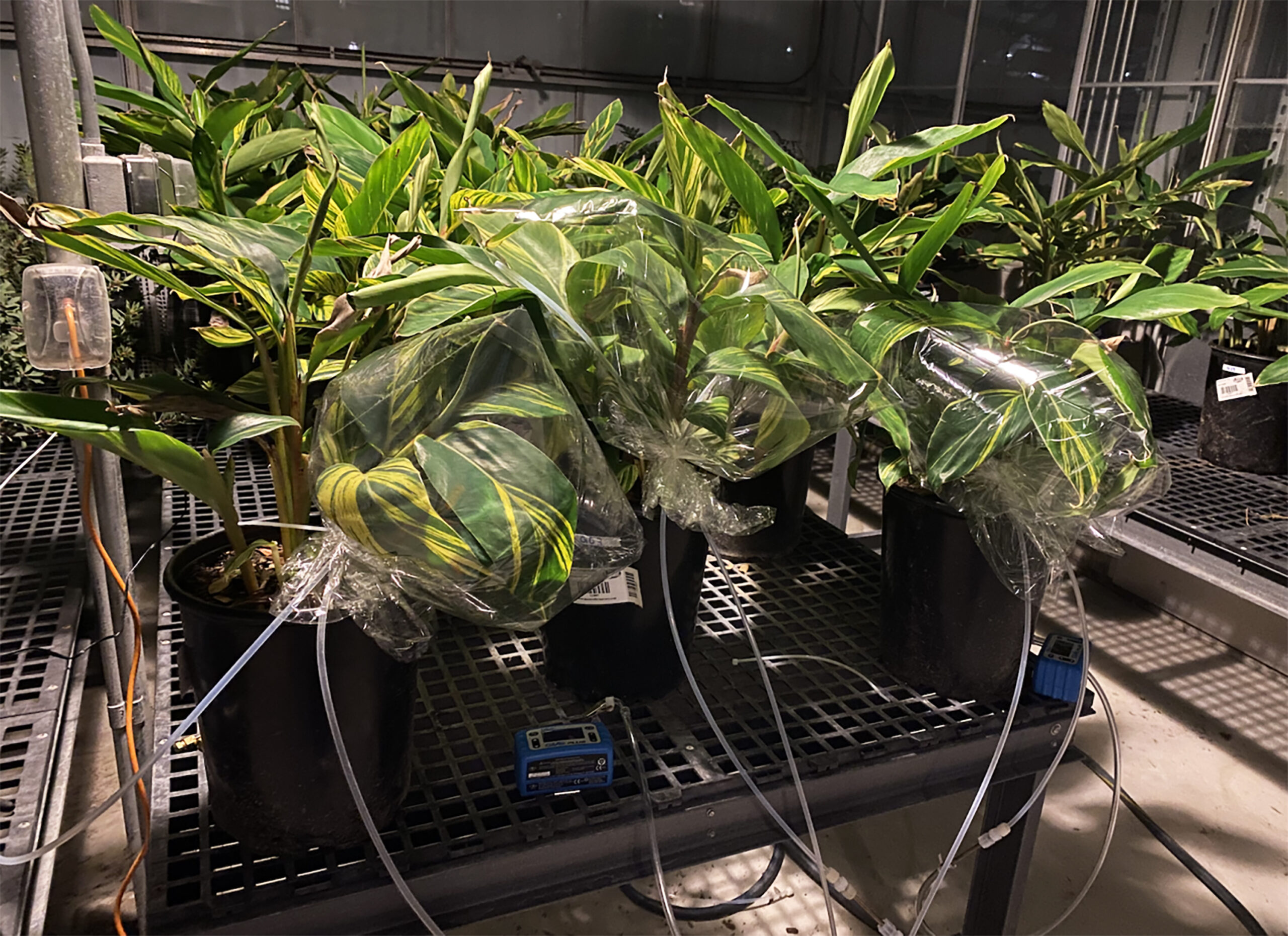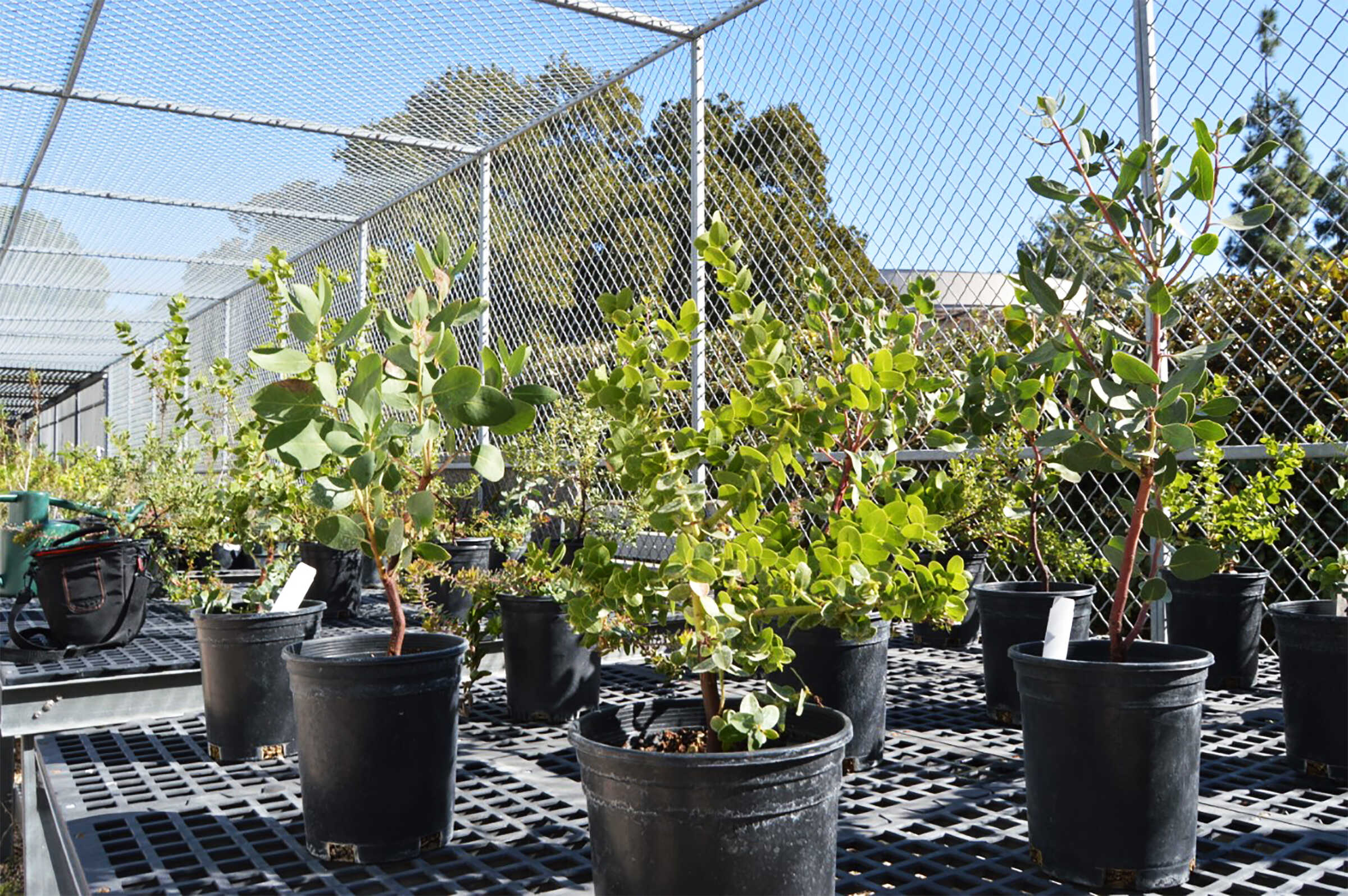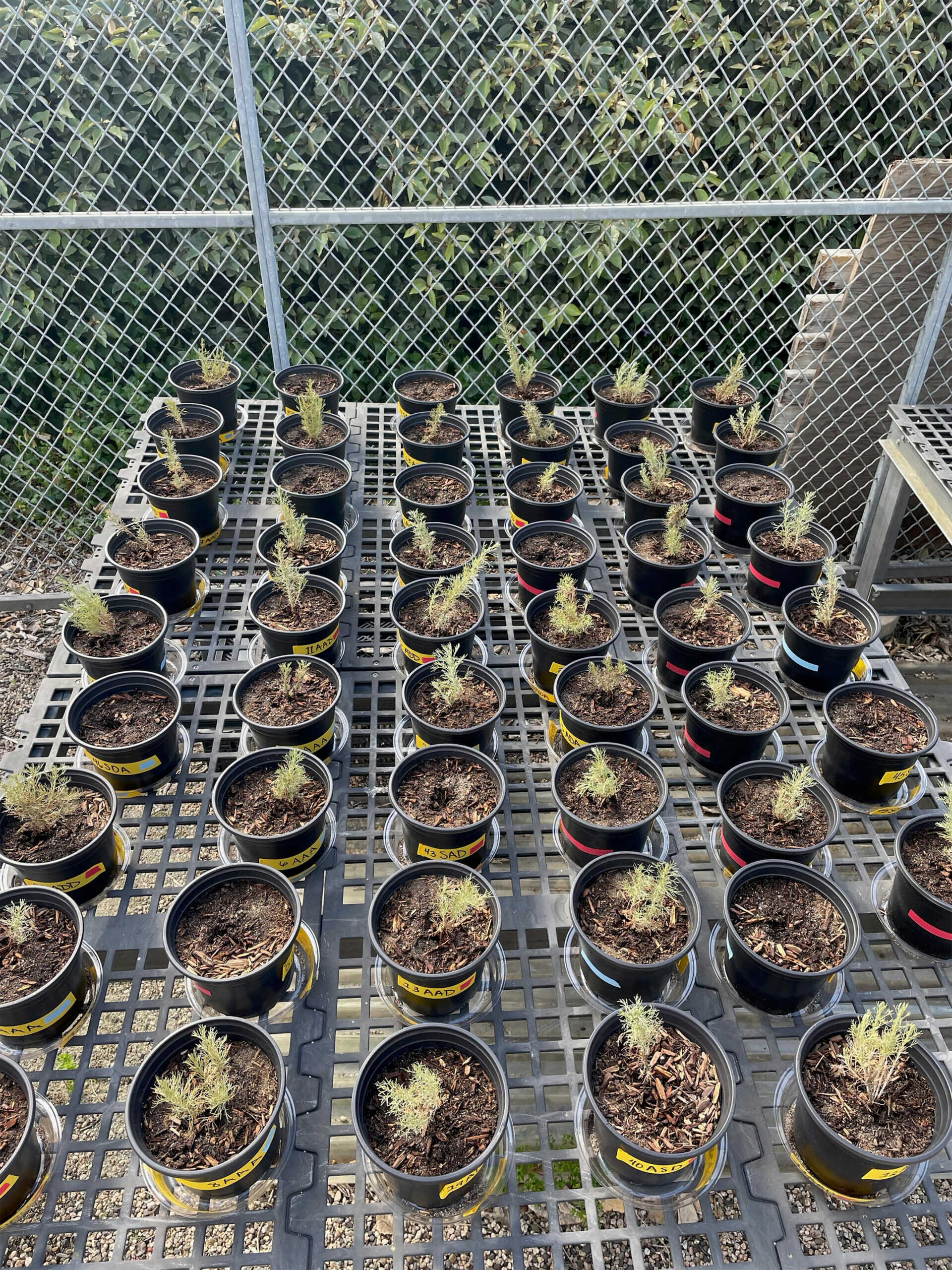The UCI Greenhouse is a 10,000-square-foot growth facility that supports teaching and research needs for the School of Biological Sciences. The Greenhouse is divided into 15 growth areas that are individually programmable for temperature. Greenhouse Staff provides watering, pest management, and basic maintenance for plants used in research and teaching. Additional facilities include common-use lab space, a lath house adjacent to the Greenhouse for plants requiring ambient conditions, an autoclave for soil sterilization, and storage space for greenhouse supplies, which are provided by investigators.
To request space in the UCI Greenhouse, please fill out the form below and send the completed document to jrodart1@uci.edu. Please also review the greenhouse user guidelines and the pesticide safety contract that are linked below.
Greenhouse Projects
Get in Touch
If you have any questions about the UCI Greenhouse, please contact:





